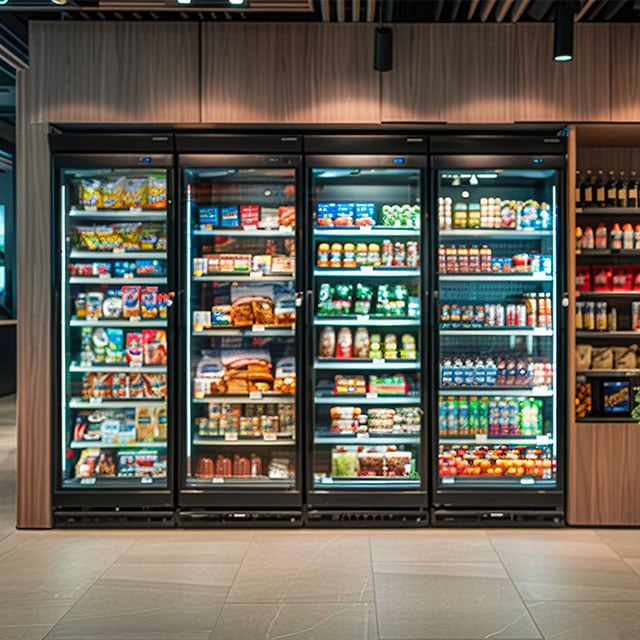On December 31, 2019, the British Columbia Supreme Court confirmed that interlocutory injunctions, which can include police enforcement clauses, are an available remedy to restrain protesters from blockading pipeline projects that have received all required governmental and regulatory approvals (Coastal Gas Link Pipeline Ltd v Huson, 2019 BCSC 2264).
Although there have been significant developments and publicity arising from protests and blockades since the decision was released, it remains an important ruling. The decision is particularly notable because it is the first to consider how Indigenous customary law and legal perspectives should be considered by courts when deciding whether to grant an injunction. It also confirms that it is the authorized band council that speaks for First Nations on matters of consultation and benefit agreements.
Background
In 2012, Coastal Gas Link Pipeline Ltd. (CGL) began obtaining permits and authorizations to begin construction of the Coastal Gas Link Pipeline Project through interior British Columbia. CGL consulted the Wet'suwet'en Bands Chiefs and Councils during the permitting and environmental assessment process, which culminated in CGL reaching community and benefit agreements with the Wet'suwet'en Bands. Pursuant to the agreements, the Wet'suwet'en Bands consented to the construction of the project. The Wet'suwet'en Bands are internally divided into 3 clans and further divided into 13 houses. Despite the general approval of the agreements by the Wet'suwet'en Bands, some of the dissenting houses opposed the granting of the permits for the project by the Environmental Assessment Office and the Oil and Gas Commission. The dissenting houses asserted Indigenous rights over the lands where the project was being constructed and some members and supporters, acting as protesters, set up blockades over the project route to hinder the project.
When construction started in 2018, the protesters refused to take down the blockades to allow the project to proceed. In late 2018, in an attempt to gain access to the project route, CGL applied for an interim injunction. The British Columbia Supreme Court granted an injunction restraining the protesters from blocking the project route to remain in force until an application for a more permanent interlocutory injunction could be heard by the Court.
The Decision—The 2019 Injunction
In June 2019, the British Columbia Supreme Court heard the interlocutory injunction application. At the time the application was heard, the protesters were continuing to blockade the project route, despite the temporary injunction. CGL argued that the protesters' use of blockades as a self-help remedy contravened the earlier granted temporary injunction, was contrary to the rule of law, and constituted an abuse of process. The protesters argued that having acted in accordance with Indigenous law, and given that CGL required their consent to enter the lands, they did not therefore contravene the temporary injunction or the rule of law. In its decision, the British Columbia Supreme Court addressed the protesters' Indigenous law defence and reviewed the test for the granting of an injunction.
Indigenous Law as a Defence
The Court held that, as a general rule, Indigenous customary law does not form a part of Canadian domestic law until there is a means or process for recognition. The Court held that potential compliance with Indigenous law relied on by the protesters in this case is not a defence to a breach of Canadian law. However, the Court further held that accommodation of Indigenous legal perspectives is a consideration in decision-making with the caveat that the law in relation to how that perspective should be considered in Canadian law is still in its infancy. The Court concluded that, under both Canadian and Indigenous law, the protesters' blockades constituted a self-help remedy. The Court reaffirmed that self-help remedies are contrary to the rule of law, and constituted an abuse of process, which the Court does not condone.
The Test for an Injunction
The Court then considered whether the 3-step test for an injunction had been met by CGL:
- There was a serious question to be tried.
The Court affirmed that this was a low threshold to be met and only required that CGL demonstrate that their claim was neither frivolous or vexatious. The Court found that CGL had met this step of the test, because the serious issues to be tried included CGL's claims against the protesters of nuisance, breaches of the Criminal Code, intimidation, inducement of breach of contract, interference with economic relations by unlawful means, conspiracy, and breach of the Forest Service Road Use Regulation.
- CGL would suffer irreparable harm that could not be compensated monetarily if the injunction was refused.
In determining whether CGL would suffer irreparable harm, the Court considered that CGL had and would continue to incur costs in the millions of dollars as a result of the protesters' blockade. Since CGL would likely be unable to recover these damages from the protesters, the harm was considered severe enough to meet this branch of the test. The Court commented that injunctions can be granted where the conduct to be enjoined is unlawful, even if there is no irreparable harm.
- Granting the injunction was appropriate on the balance of convenience.
In considering CGL's interests, the Court considered the hundreds of millions of dollars in losses that would occur if the project did not move forward, and found that this harm was irreparable and significant. The Court also considered the economic losses for Indigenous businesses that had entered into contracts related to the project, and the loss of employment opportunities and financial benefits that would result if the injunction was not granted.
In balancing the protesters' interests, the Court considered that granting the injunction would not impact their hunting and trapping activities and have archeological impacts on lands in which they had an interest; any such impact would arise from construction—not the injunction. The Court also found that the injunction would only restrict the protesters' rights in a limited way. Importantly, the Court recognized that granting an injunction in this case would merely restrain the protesters from unlawfully using self-help remedies.
Lastly, the Court considered the interests of the Wet'suwet'en Bands. It noted the disagreement within the Bands about support for the project. Since the dissenting houses, including certain of the protesters, had the opportunity to participate and voice any concerns related to the project through the consultation and regulatory processes, the balance of convenience was in favour of granting the injunction to allow CGL to move forward with the project for which it had legitimately obtained authorizations and permits.
Ultimately, the Court held that CGL met the test and granted the injunction to prevent the protesters from further blocking the construction.
Takeaways
The 2019 Injunction decision is notable for the following three takeaways, which have the potential to impact future decisions of this nature:
- Indigenous customary law does not displace the application of Canadian domestic law, but may be relevant to Indigenous perspectives that bear on the issue before the court.
- Courts will grant injunctions against individuals or groups who use self-help remedies to delay or impede projects for which regulatory and government approvals have been obtained. A party's use of self-help remedies to oppose an injunction and their failure to take steps through legal means to advance their interests (such as a failure to participate in regulatory processes or engage in consultation) may affect the assessment of the balance of convenience step of the test for an injunction.
- If a project proponent has an agreement with First Nations bands, the court may put greater weight on the consultation undertaken and any agreement with elected Chiefs and Councils, rather than any dissenting interests with the bands. The decision supports the position that recognizes elected Chiefs and band councils as speaking for the First Nations, though this is an evolving area and may give rise to disputes in the future.























